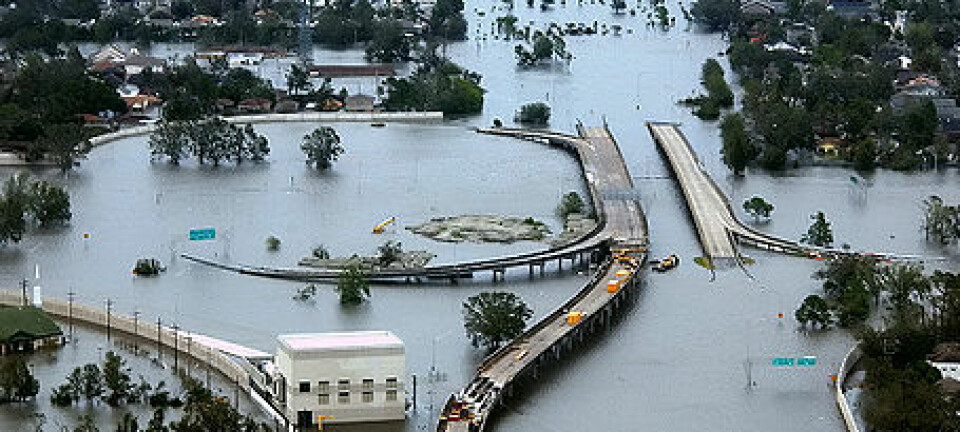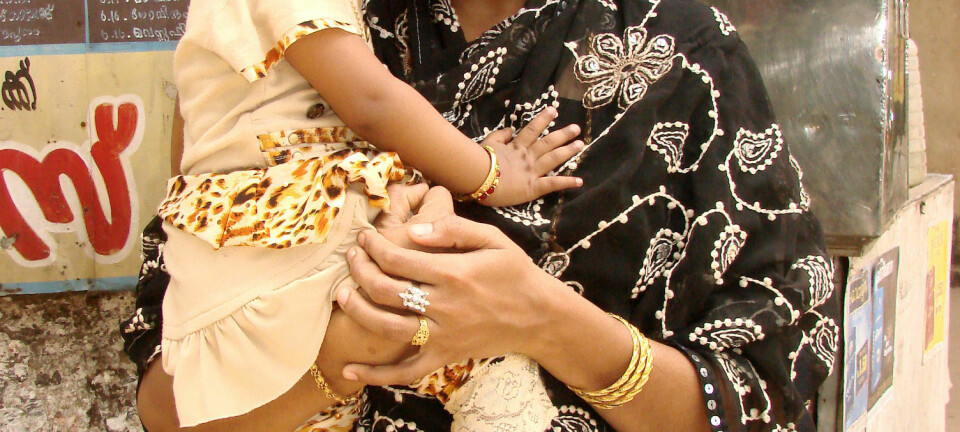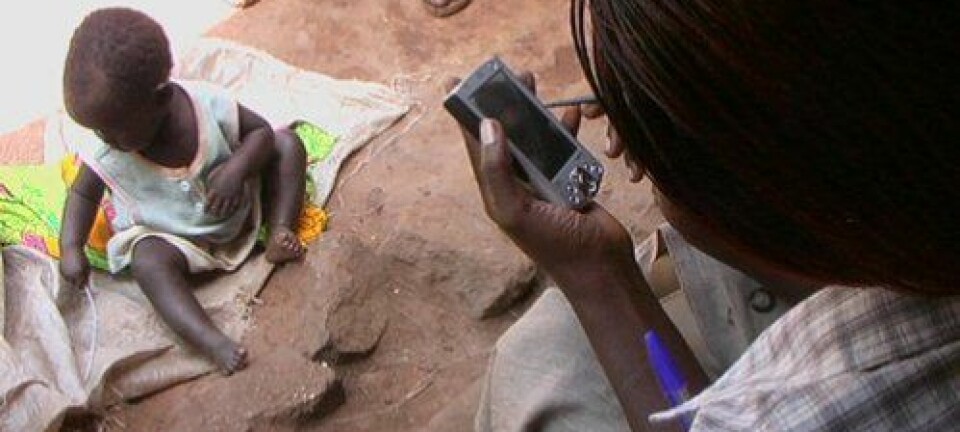An article from Norwegian SciTech News at SINTEF
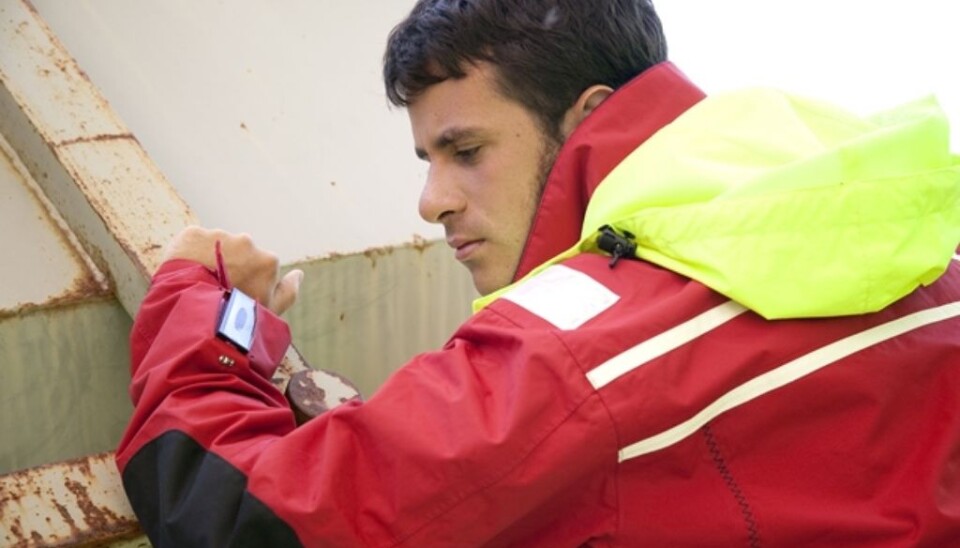
Jacket with built-in mobile phone made to save lives
Imagine there is a fire raging in a building when the fire leader sends out a message. The firefighters all take a look at their jacket sleeves and read it.
Denne artikkelen er over ti år gammel og kan inneholde utdatert informasjon.
Communication is essential during the chaos generated by a fire, earthquake or similar crisis. A standard mobile phone is of only limited help in such circumstances. It is a difficult, if not impossible, task for rescue personnel to operate small mobile phones for reading and sending messages. There has to be a better way.
For this reason, researchers at SINTEF have been working for some time on the idea of developing a physical user interface to social media.
A year ago, they developed a jacket together with students from NTNU.
Wires and sensors were installed into the jacket, together with battery-driven circuitry controlling sensors and speakers fitted into one of the pockets. Instead of a phone screen, a display was sewn into the jacket sleeve showing a line of rolling text. A person receiving a message feels a small vibration in his or her collar.
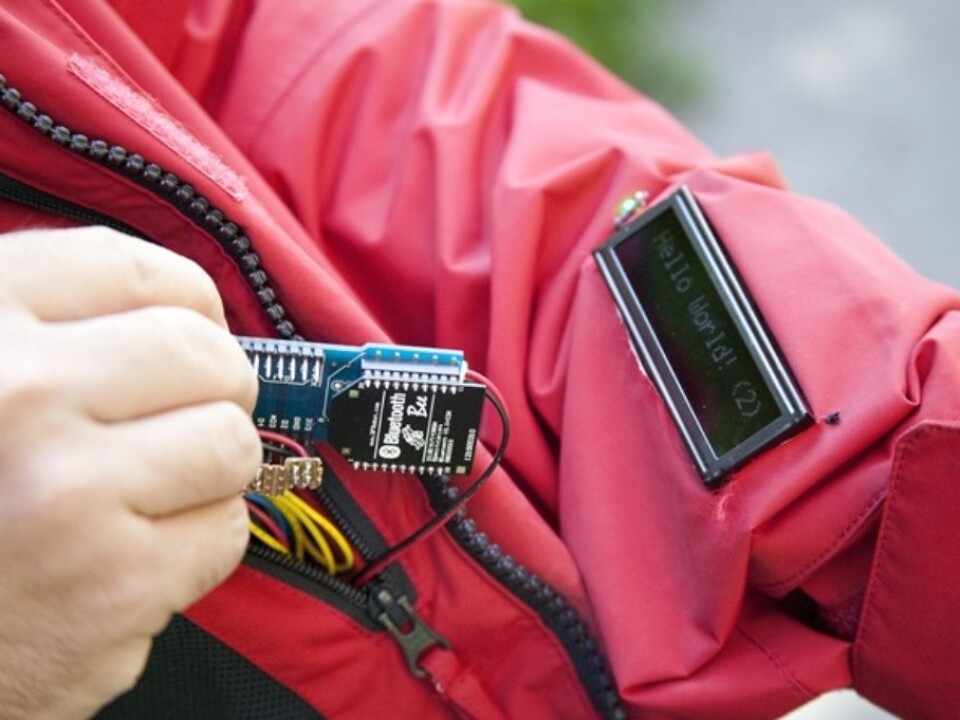
“Making the connection to Facebook is just one example”, says Thomas Vilarinho at the Norwegian research organisation SINTEF.
The jacket is now all set to be integrated with a variety of social media platforms.
“Our aim has always been to create a platform on which we can integrate all social media services such as LinkedIn, Facebook and Twitter. This has now been completed”, says Vilarinho.
Communication within a group
Rescue operations are often carried out by large teams of professionals drawn from various organisations.
“These different teams must maintain high levels of coordination and communication among themselves while a rescue operation is in progress”, says Vilarinho.
The researchers have been in conversations with Red Cross, police and fire service personnel in Ireland. They have all emphasised how vital it is to keep information within the team.
"They are very careful about what information they distribute outside the team”, he says.
For this reason, the researchers have now developed a so-called “peer-to-peer” system and have transferred the service from Facebook to a private, closed, network.
The new Wi-Fi Direct system has been designed for persons in a group operating within the same area, between 20 and 50 metres apart, and in situations where they are not dependant on a mobile network in order to communicate with each other.
This is a major advantage because mobile networks are commonly adversely affected during natural disasters and other crisis.
The reciever cannot respond – yet
A team leader can thus send information from his or her mobile or PC to other members of the team.
However, it is still not possible for one jacket to communicate with another. Nor can the receiver of a message respond to the sender.
The researchers have carried out assessments and talked to a variety of potential users. They have demonstrated the jacket technology the Irish fire service, and to civil defence personnel in both Ireland and India
"A major and obvious wish has been to enable team members to acknowledge that a message has been understood, and to send messages back to the leader”, says Vilarinho.
The project is headed by TSSG in Waterford in Ireland and will be wound up next month. Norwegian researchers are hoping to be able to continue the work.









